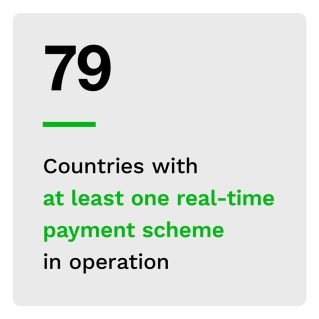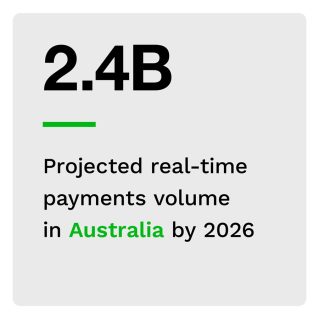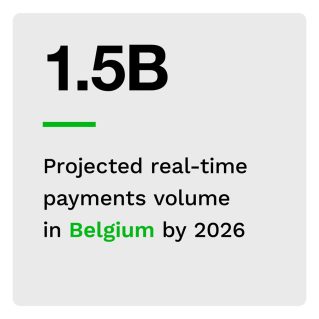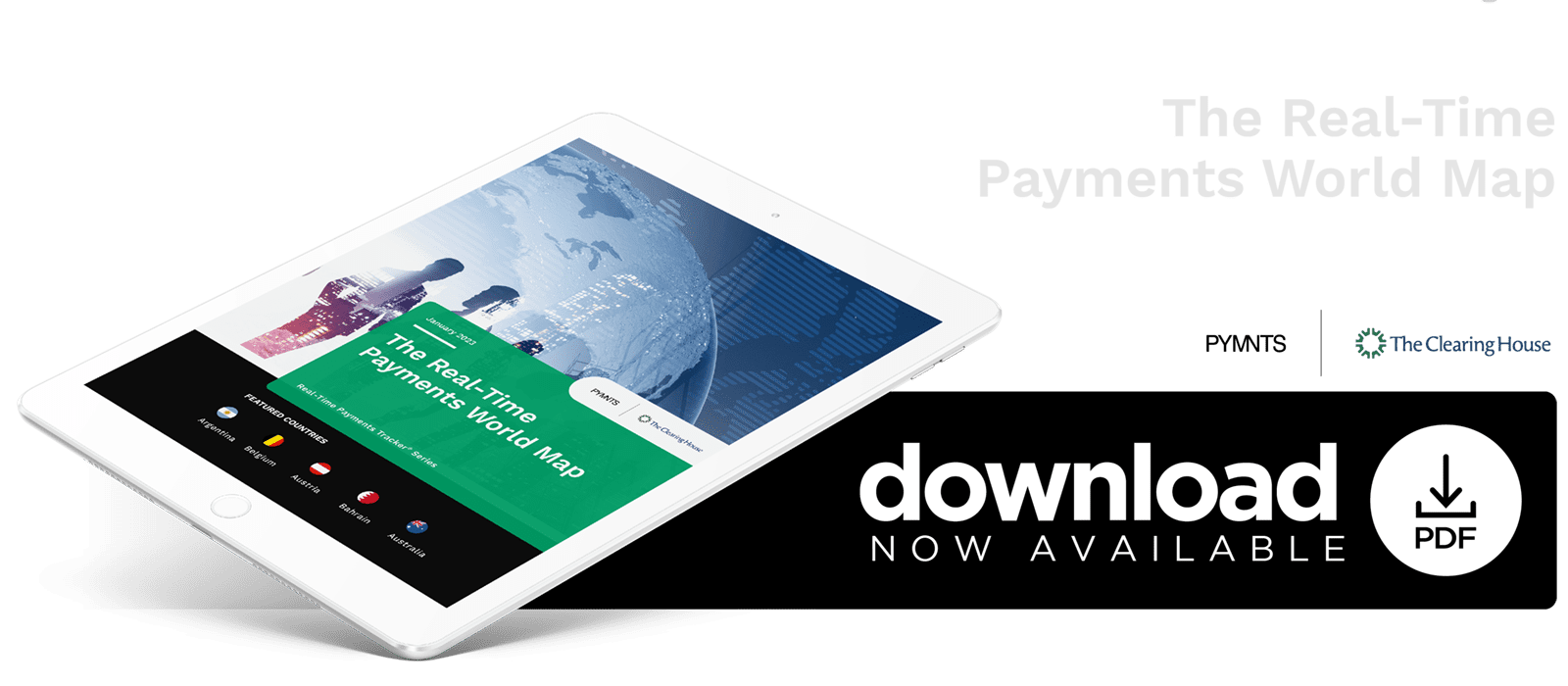New Map Shows Real-Time Payments Progress in 2023

Real-time payments are becoming table stakes worldwide, driven by intense demand from businesses and individuals. Surveys have found that the availability of fast payments was a deciding factor for businesses when looking for banking partners, for example, and four-fifths of companies say that real-time payments have the power to fundamentally reshape how they conduct business. Nearly one-third of customers said access to such payments is a significant consideration when selecting a financial institution (FI).
Surveys have found that the availability of fast payments was a deciding factor for businesses when looking for banking partners, for example, and four-fifths of companies say that real-time payments have the power to fundamentally reshape how they conduct business. Nearly one-third of customers said access to such payments is a significant consideration when selecting a financial institution (FI).
Countries around the globe are investing in real-time payment capabilities to meet these demands and compete with the world economy, but every nation’s situation is unique.  Those with more entrenched digital infrastructures have a leg up regarding real-time payments programs, and those lacking a centralized banking infrastructure have found themselves at a disadvantage.
Those with more entrenched digital infrastructures have a leg up regarding real-time payments programs, and those lacking a centralized banking infrastructure have found themselves at a disadvantage.
Real-Time Payments in Argentina
Argentina, for example, has no less than three different programs for these payments, with each one catering to a different customer base and use case. Other countries are entering the real-time payments scene as part of multinational groups, such as the European Union. Its Single Euro Payments Area (SEPA) Instant Credit Transfer scheme is backed up by its dozens of member states. However, coordinating these different banking systems has proven to be a challenge all on its own.
Innovations in China
The success of individual countries’ real-time payment schemes also hinges on the enthusiasm and cooperation of their citizens. China, for instance, saw 18.5 billion real-time transactions in 2021, while the United States recorded just 1.8 billion transactions in the same year. This indicated much more enthusiasm for these payments in China that could translate into a stronger economic presence on the world stage.
The “Real-Time Payments World Map,” a collaboration with The Clearing House, examines the state of these payments across countries around the world and how they compare to their counterparts, as well as total payments volume in recent years.


